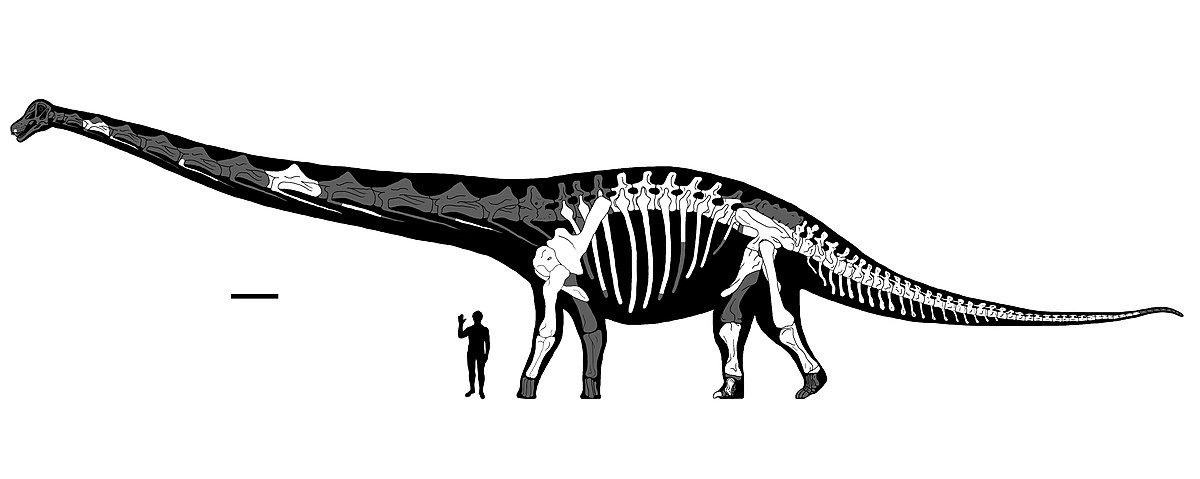Perthblog
What the Dreadnoughtus Dinosaur Teaches us About Leadership 2.0

Did you hear about the recent discovery of the so-called Dreadnoughtus schrani dinosaur (found in Argentina)? When it lived on Earth it weighed some 85 tons. That’s 12 African elephants or 7 Tyrannosaurus Rexes. Or to translate into a modern equivalent, that’s over 40 Cadillac Escalades. That’s really, really big.
So as usual that got me to thinking. The obvious question is, why isn’t it still around? After all it was powerful enough to eat everything on Earth, and then some. So it should have had no problem vanquishing all the other small fry out there.
Of course there were lots of other big animals out there, although not quite as big as Dreadnoughtus, and they didn’t survive either. So this raises the question as to whether big animals have long-term survival problems.
The scientists tell us yes. It’s not just climate change, or meteorites, although they probably figure into the explanation. But when you are as big as a Dreadnoughtus there’s some practical problems that you don’t think about. Like getting enough food. Or moving quickly – it might take several seconds for the animal to realize it stepped on a spiny ant-eater, because nerve impulses have so far to travel.
In fact, just think about a modern aircraft carrier. It’s really a small city and a lot of things go into running it. The Dreadnoughtus was a city on legs and although they evidently survived for quite a few eons, they didn’t have the wherewithal to make it to the modern era.
On the other hand apparently the most successful animals on the planet are insects, if you measure them by total mass, which isn’t a bad way to measure success if you think about it. Apparently nature did a simple experiment. Create the very large and the very small and then throw them into the primordial soup, let them duke it out and see what happens.
No context. Small has it every time. Bugs are everywhere. And even they are not the most successful beings out there. There’s more mass in our microbiome through the weight of microbes in us (mainly in our guts) than in our bodies themselves apparently. So even insects might not cut it. Bacteria and viruses are even weightier in the overall scheme of things.
So where is this all going? Well biological phenomena are often a great model for social things too. Nature is telling us that small is beautiful. But in the human world we have been going for bigger things. Nation-states, companies, hedge funds, aircraft, even SUVs in the US.
I’m particularly interested in the organizational and financial stuff. Both have been getting bigger. But we also know that once you get bigger socially and organizationally, things don’t work as well. In fact, once organizations get big, things start to break down.
Innovations come from small enterprises not large ones. Once investment funds get large their returns come down and it becomes impossible to beat the market. Large companies get corporate dementia. Government agencies get even more dysfunctional because they are so big there’s no accountability, communications take too long or don’t happen at all and their internal logistics break down. Small countries like Norway do better than large countries like Brazil or India.
Sounds just like Dreadnoughtus right?
Fortunately there are signs that human society is taking note. There’s more focus on small entrepreneurial companies. Technology is going to the nanoscale. Drones are taking over from mechanical albatrosses, in a social analog of the natural.
Even in the political realm things are changing, witness the movement to split California into 6 new statelets. As unspeakable as ISIS is, it is showing us that small States can have a power and impact that is impossible for the large ones to muster.
I think this is going to impact leadership, leadership development and leadership thinking. In Leadership 1.0, the emphasis was on the large. Leadership of countries, large corporate enterprises, the military and the like. You learn about large organizations when you do a MBA or MPA, not the small ones.
But the emergence of education and degrees in entrepreneurship demonstrate that this way of thinking is changing too. We are starting to incorporate into our thinking the concepts of Leadership 2.0. Those concepts are on keeping things small, simple, focused, fast. Dance like a butterfly, sting like at bee, as Muhammad Ali famously opined.
Dreadnoughtus was Leadership 1.0. Leadership 2.0 is emerging. Better be prepared.
When you subscribe to the blog, we will send you an e-mail when there are new updates on the site so you wouldn't miss them.
